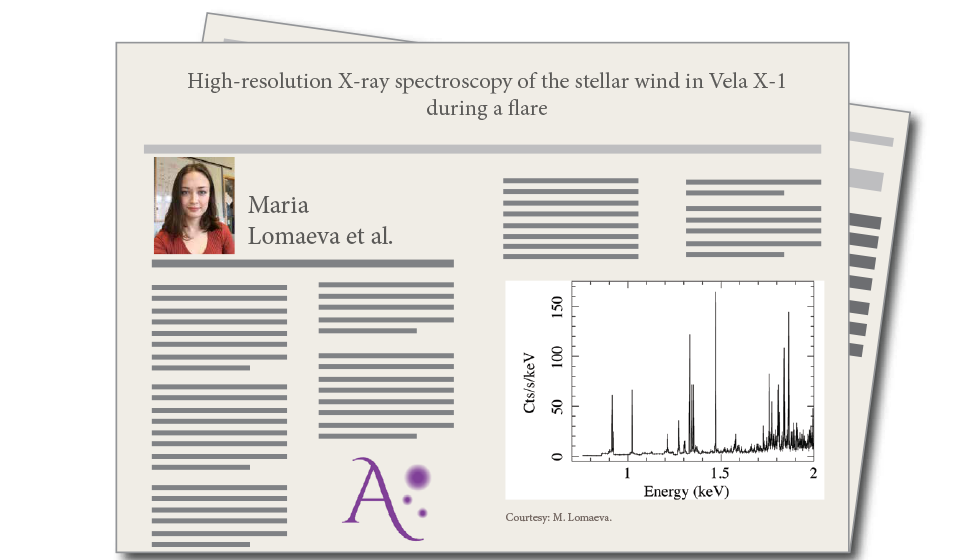
High-resolution X-ray spectroscopy...

By Maria Lomaeva and Victoria Grinberg
The unprecedented combination of effective area of the Athena optics and energy resolution of the Athena/X-IFU instrument will revolutionize our understanding of the interaction between stellar winds and the intense radiation field produced by compact objects in X-ray binaries.
Supergiant high mass X-ray binaries (HMXBs), where a neutron star or a black hole accretes material from the structured, clumpy wind of an O/B companion, are key to understanding such systems. Their highly variable emission properties can be driven by changes in the clumpy accretion flow and by direct variability of the continuum, e.g., related to the pulsar rotation period. Results of our recent study, based on a deep XMM-Newton/RGS observation of the HMXB Vela X-1 during a bright flare, agree with the presence of a multiphase medium (colder clumps embedded in hotter material) in the system and are consistent with the wind plasma responding to changes in irradiation. But the true continuum variability timescales and thus the details of the response of the wind cannot be accessed with any of the current high resolution instruments.
We show that Athena/X-IFU will be able to provide high quality spectra on timescales of a few minutes. It will enable us to trace the changes in wind plasma properties directly and thus shed new light onto the structure of accretion flows and stellar winds in HMXBs.

